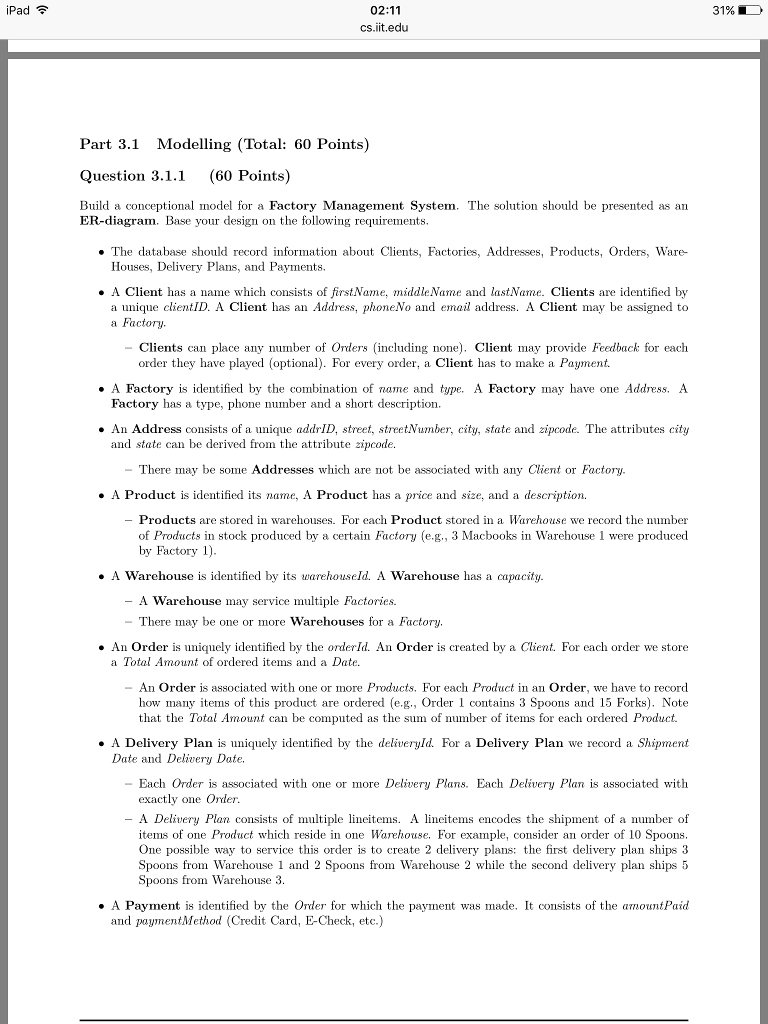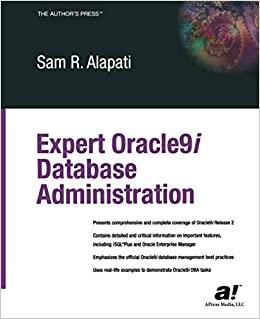
iPad 02:11 cs.iit.edu 31% Part 3.1 Modelling (Total: 60 Points) Question 3.1.1 (60 Points) Build a conceptional model for a Factory Management System. The solution should be presented as an your design on the following requirements. The database should record information about Clients, Factories, Addresses, Products, Orders, Ware- Houses, Delivery Plans, and Payments. A Client has a name which consists of firstName, middleName and lastMarne. Clients are identified by a unique clientID. A Client has an Address, phoneNo and emai address. A Client may be assigned to a Factory -Clients can place any number of Orders (including none). Client may provide Feedback for each order they have played (optional). For every order, a Client has to make a Payment. A Factory is identified by the combination of name and type. A Factory may have one Address. A Factory has a type, phone number and a short description An Address consists of a unique addrID, street, streetNumber, city, state and zipcode. The attributes city and state can be derived from the attribute zipcode. There may be some Addresses which are not be associated with any Client or Factory. A Product is identified its name, A Product has a price and size, and a description. - Products are stored in warehouses. For each Product stored in a Warehouse we record the number of Products in stock produced by a certain Factory (e.g., 3 Macbooks in Warehouse 1 were produced by Factory 1) A Warehouse is identified by its warehouse!d. A Warehouse has a capacity. - A Warehouse may service multiple Factories. - There may be one or more Warehouses for a Factory An Order is uniquely identified by the orderId. An Order is created by a Client. For each order we store a Total Amount of ordered items and a Date. An Order is associated with one or more Products. For each Product in an Order, we have to record how many items of this product are ordered (e.g., Order 1 contains 3 Spoons ad 15 Forks). Note that the Total Amount can be computed as the sum of number of items for each ordered Product. A Delivery Plan is uniquely identified by the delivery!d. For a Delivery Plan we record a Shipment Date and Delivery Date. Each Order is associated with one or more Delivery Plans. Each Delivery Pla is associated with exactly one Order - A Delivery Plan consists of multiple lineitems. A lineitems encodes the shipment of a number of items of one Product which reside in one Warehouse. For example, consider an order of 10 Spoons. One possible way to service this order is to create 2 delivery plans: the first delivery plan ships 3 Spoons from Warehouse 1 and 2 Spoons from Warehouse 2 while the second delivery plan ships 5 Spoons from Warehouse 3. A Payment is identified by the Order for which the payment was made. It consists of the amountPaid and paymentMethod (Credit Card, E-Check, etc.)







